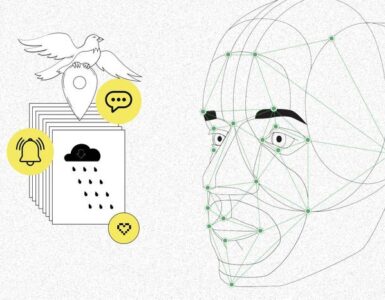Video is king, Facebook and Twitter are a thing of the past for most schoolchildren, and many pupils have problems telling the difference between real and junk news, according to a study by news literacy project Lie Detectors.
The findings shed light on the social media habits of schoolchildren and the threat of disinformation they face. The report reveals that younger users are flocking to more visual-based platforms such as Youtube, Instagram and Snapchat.
“If we’re going to talk to young people about disinformation we have to go to where young people are on social media – and we have to engage with them on their terms,” said Juliane von Reppert-Bismarck, the Founder and CEO of Lie Detectors, a journalist-led non profit organization headquartered in Brussels.
In an external contribution to the report, Andreas Schleicher, Director of Education and Skills at the Organisation for Economic Co-operation and Development (OECD), mentioned Lie Detectors as example “for how we can teach children to distinguish between credible and untrustworthy sources of information, between fact and fiction, and how we can enable them to question or seek to improve the accepted knowledge and practices of our times.”
The report, titled Tackling Disinformation Face to Face: Journalists’ Findings from the Classroom, gathers the feedback resulting from activity with more than 8.500 schoolchildren in Austria, Belgium and Germany, as well as 120 journalists and 260 teachers. The feedback forms were collected at the end of over 400 classroom visits conducted by professional journalists in 33 cities organised by Lie Detectors over the past two years to initiate a discussion about the challenges of disinformation and the functioning of ethical journalism with young people, helping them thereby to become media-literate critical thinkers.
The key takeaways from the study are:
• There is a striking digital divide between teachers and their pupils. While almost half the teachers (49.6%) use Facebook, it is the least-used platform among schoolchildren (11.9%). Visual platforms such as Instagram (60.4%) and Snapchat (48.6%) dominated among youngsters.
• Schoolchildren are far more likely to use platforms with visual contents than their teachers. This was reflected in their preference for that type of content during the session. Anecdotal reports from journalists outline how pupils barely engage with the accompanying text.
• Disinformation does not discriminate. 95% of journalists said that at least one pupil in a class fell for a fake regardless of the socio-economic background of the school.
• Teachers are willing but ill-equipped to teach media and news literacy. 80% of teachers said they understand the importance of teaching kids to spot fakes on social media. But fewer than half said they had discussed the topic with their classes.
The report found that Lip-syncing video app TikTok was used much more among 10-11 year-olds than among 14-15 year-olds. The older pupils were particularly fond of Instagram with more than three quarters using it – twice as high a proportion as 10-11 year-olds.
Overall, the sessions were well received by pupils. Nine out of ten schoolchildren reported better understanding journalism and the dangers of disinformation. And 95% said they enjoyed the session. “Now I know how to debunk lies online and that’s good,” said one 11 year-old pupil from Cologne. Teachers were also glad that journalists led the sessions, with over 98% saying it was important for reporters to run the classes.
Editor’s note: The study was written in cooperation with Digitaler Kompass in Vienna, Austria. Lie Detectors is a non-profit organisation based in Brussels, Belgium, and active in Austria, Belgium and Germany. For more information or to request a classroom visit, visit their website.














